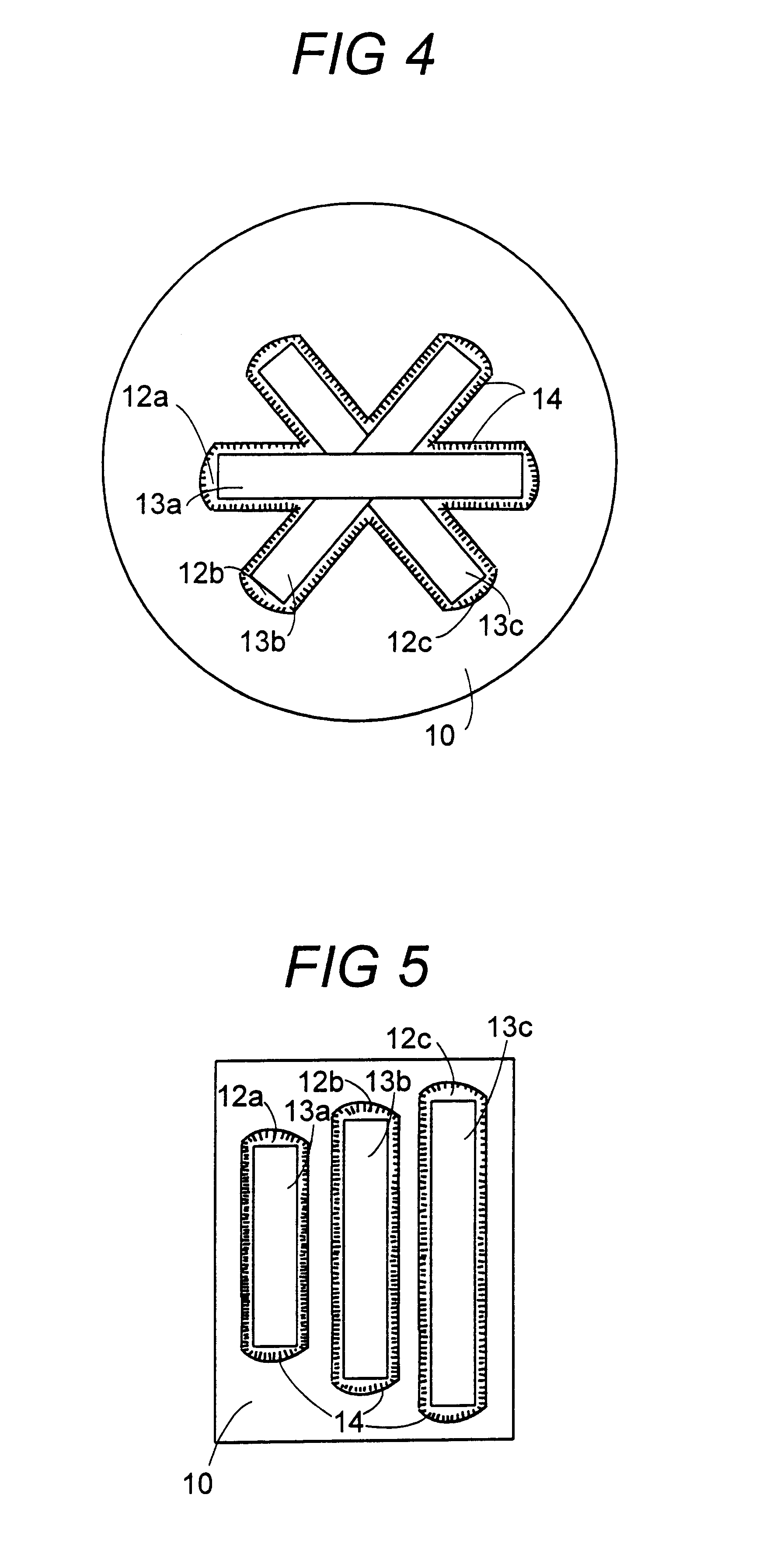Label for marking and remote detection of objects
a technology for labels and objects, applied in the field of labels for marking and remote detection of objects, can solve the problems of limited freedom of movement, inability to realize in a real situation, and the difficulty in implementing the method of housing the sensor elements in the labels,
- Summary
- Abstract
- Description
- Claims
- Application Information
AI Technical Summary
Benefits of technology
Problems solved by technology
Method used
Image
Examples
Embodiment Construction
A label acccording to a preferred embodiment of the invention comprises a housing with a lower portion 10 and an upper portion or cover 11, both of which are preferably made from plastics or similar material, which lacks magnetic properties and which may be massproduced at a low cost, as disclosed in FIGS. 1 and 2. The label is arranged to be attached to the intended object--such as a shop article, a piece of furniture or a piece of clothing--by for instance gluing, mounting or sewing. A cavity 12 is formed in the internal portion of the label housing 10, 11 by a longitudinal recess in the lower portion 10. On the inside of the cover 11 a corresponding protruding portion is formed, which follows the recess in the lower portion 10. A space is formed between the recess and the protruding portion, the volume of which is large enough for receiving and housing a sensor element 13, as described below.
The sensor element 13 is formed as an elongated ribbon of amorphous magneto-elastical mat...
PUM
 Login to View More
Login to View More Abstract
Description
Claims
Application Information
 Login to View More
Login to View More - R&D
- Intellectual Property
- Life Sciences
- Materials
- Tech Scout
- Unparalleled Data Quality
- Higher Quality Content
- 60% Fewer Hallucinations
Browse by: Latest US Patents, China's latest patents, Technical Efficacy Thesaurus, Application Domain, Technology Topic, Popular Technical Reports.
© 2025 PatSnap. All rights reserved.Legal|Privacy policy|Modern Slavery Act Transparency Statement|Sitemap|About US| Contact US: help@patsnap.com



